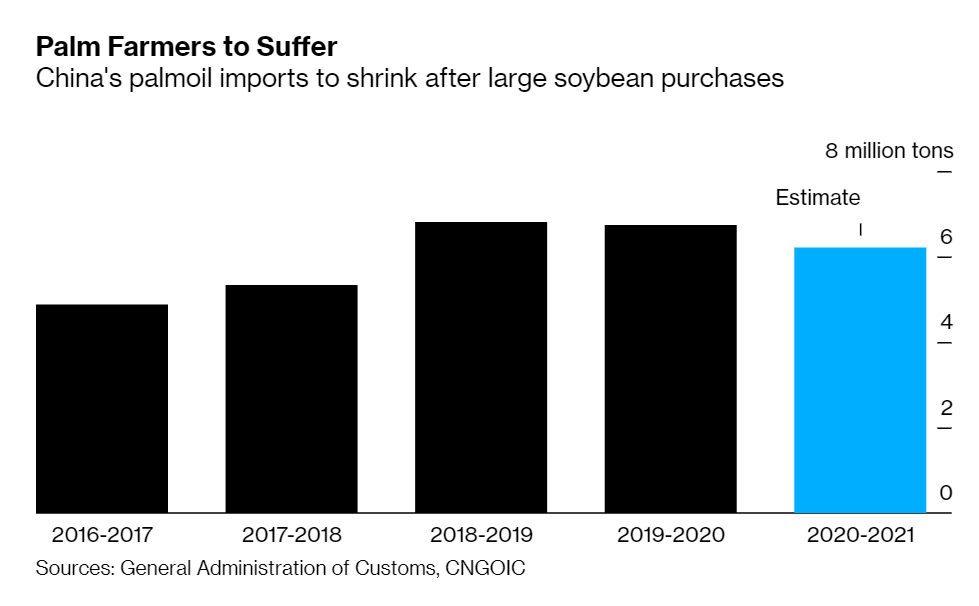We are currently attending the 3rd Agricultural Supply Chain Asia 2021, a three-day conference organised by the US Soybean Export Council and US Grains Council, aiming to provide the latest updates on corn and soybean sectors.
Source: Bloomberg, 2021
The conference is timely, given the recent market development in the soybean industry. China’s palm oil imports are expected to dip following large amounts of soybean purchases recently made. As palm oil’s top contender, and the primary source of animal feed, the major Chinese importers are, according to Bloomberg, “scooping up unprecedented quantities of soybeans and corn on world markets to feed domestic hog herds that are rebounding after being devastated by the African swine fever.” Interestingly, there have been a resurgence of the African swine fever (as well as a new strain of the virus), expectations are that a possible outbreak would not be as deadly as that in 2019.
Accordingly, soy stocks in the US and other key origins, are forecasted at lows. But traders point out that world stocks have shifted to South America in the last few years (and the US operates on tighter stocks due to higher logistics costs and seasonal factors), so the world stock-to-use ratio may not be so bad (see DTn graph at the bottom ). The question now is how this would affect the palm oil trade, especially in light of the improving weather conditions in Brazil and Argentina over the past two weeks.
By Nadirah SHARIF, 26 Nov 2021
Editor: This reminds of our chat with some traders about the Malaysia palm oil stocks situation. While these were reported at multi-year lows, some pointed out that tanks were surprisingly full. Are well monitored stocks figures getting less reliable and/or representative? Commodity reporters have in recent years noted that the Malaysia MPOB (official count) stocks are perceived as less reliable. For Malaysia it is worth asking if more tank farms ended up in customs free zones. For palm oil, there is also attention on (mostly unofficial) estimates of stocks for Indonesia, China and India.



